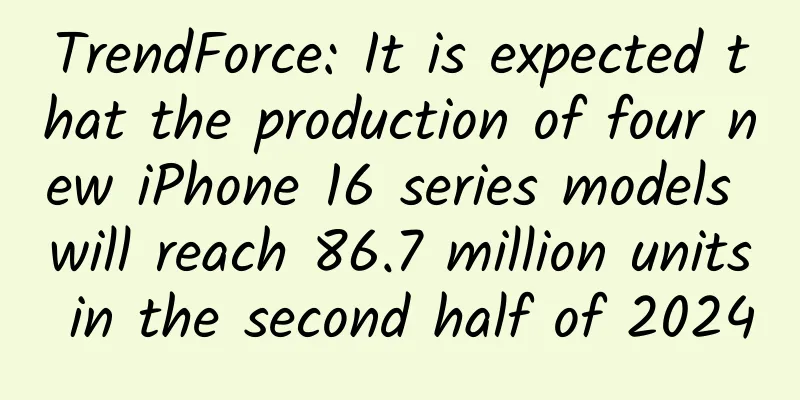6 “depths” of social media and digital marketing in 2022

|
Competition in the video space is getting fiercer “ Video is the top driver of online traffic across nearly every major social platform. ” —Adam Mosseri (Instagram executive ) The success of video format is due to three reasons: First, based on the data of user participation, algorithm technology optimizes video recommendations, making it easy for users to get a " sense of satisfaction " . Second, video is more competitive in the attention economy: compared with static graphic information, users prefer sensory experiences with richer elements and more dynamics. Third, for brands, video format has a higher degree of acceptance and tolerance. Reading graphic information requires users to have a certain level of literacy, while audio and video are more easily adopted by users, and the threshold for use and creation is lower. According to Wordstream statistics, social video has a market share 1,200% higher than text and image information . The development of " video " is advancing by leaps and bounds. Traditional media and technology companies have entered the video industry with the support of various cutting-edge technologies, and the competition is fierce. In addition to social platforms such as Facebook , Instagram and TikTok , film and television giants with rich content IP resources have also become one of the main participants in the competition for video streaming . Following Warner HBO Max , Disney Disney+ and NBC Universal Peacock , Viacom CBS changed its name to Paramount Global , reshaped its streaming platform CBS All Access , and named it "Paramount+" , providing a series of video programs such as TV series, movies, animation, and comedy. Paramount executives said they will leverage the company's global capital strength to lead Paramount+ to a new height in streaming. In addition, visual social platforms such as pictures and texts have entered the video industry one after another, realizing platform transformation and upgrading . Take Instagram as an example. The social media that started out by sharing static pictures has now taken the lead in developing video functions and continuously optimizing the video creation technology of the Instagram Video module. For example, it combines IGTV and live broadcast to create an uninterrupted video experience, so as to realize a composite social software that is easier for users to reach and more entertaining. As the number of videos watched by users on social media continues to rise, the existing video production evaluation system is gradually being disintegrated, and new video forms that are followed by users are emerging: First, short videos have more competitive advantages . According to Colormatics data, 68% of social media users prefer to watch commercial videos that are less than 1 minute long. It usually only takes a few seconds to win the user's attention, so how to split long content into short-term content and capture the user's increasingly scarce attention in a very short time is a difficult problem that creators, brands, etc. need to think about in the future. Fortunately, social platforms such as TikTok and Instagram have made a lot of efforts in the development of technology for making short videos . Creators can use common tools such as music, filters, composition templates, tags, etc. to achieve customized creation of short videos. Secondly, the " silent + subtitled " video viewing method has gradually become the mainstream . According to the MASSMEDIA report, about 85% of Facebook users choose to turn off the sound when watching videos, which is more convenient for users and will not disturb people around them, and will not affect the viewers' understanding of the content of the video. Opinion leaders and brands are deeply connected As the COVID-19 pandemic spreads around the world, social distancing restrictions have made media-based life, mainly based on social media, the main form of daily life. This has also made brands realize that digital marketing will become normalized, and social media has become the best choice for product promotion and production and sales . According to Influencer Marketing Hub data, the global market size of opinion leaders is approximately US$ 13 billion in 2021 and is expected to reach US$ 84.89 billion in 2028 . In addition, brands have begun to establish closer, deeper and longer-term cooperation with opinion leaders. Compared with one-time cooperation, brands have begun to focus on the user cultivation value of opinion leaders . This change stems from the opinion leaders' deep understanding of their target users, which can accurately capture the attention of target users and achieve precise brand delivery. On the other hand, the role of opinion leaders is also changing, and many of them join the brand company after the cooperation, realizing the deep bundling of value . For example, InStyle magazine hired Tefi, a popular comedian on social media , to operate the magazine's TikTok account. The resulting composite role of " opinion leader - brand consultant " helps brands to master the marketing code of reaching users from opinion leaders and create more timely and effective social content . In the long run, this is indeed a forward-looking deep cooperation model. The “ opinion leader + social video + brand ” strategy has achieved great results. According to the MASSMEDIA report, 84% of consumers said they would choose whether to buy a product based on a brand’s promotional video. The product landscape around the creator economy is expanding Also affected by the epidemic, the creator economy has been developing rapidly since the beginning of the epidemic. According to data from The Influencer Marketing Factory , there are more than 50 million social media creators in the world, and the current creator economy market size has exceeded US$ 104.2 billion. Creator economy refers to an economic model in which independent content creators publish content on social media and make profits from the content. Unlike the opinion leaders mentioned above, not all creators are influential. However, they are similar to opinion leaders in that they are rooted in users and create attractive social content based on understanding user preferences. Creators usually need to spend a lot of time on social media to capture hot topics, learn social language, develop personal style (for example, sense of humor is an important indicator), understand user portraits, etc., especially for accurate assessment of target users. Top creators in various niches have often become experts in that field or community. Collaborating with content creators, empowering social media in reverse, and building a public platform to connect creators and users have become the focus of various social media companies. Social media platforms give creators exposure, encourage them to publish multiple social content, and develop numerous commercial plug-ins to create a more convenient creative environment, helping creators to manage content and realize value. For example, Instagram developed Reels and Badges tools to help creators create more visually rich video content. In addition, social media platforms encourage creators to interact with each other to achieve two-way traffic. For example, TikTok 's duet function and Instagram 's Collab function developed last year both support joint creation by multiple creators. Fighting for the C position requires a Generation Z perspective As the first generation to use mobile devices, those born between 1995 and 2009 , mobile devices such as mobile phones have become the social and cultural genes that Generation Z users carry with them anytime and anywhere. According to a public report by Millennial Marketing ( The Power of Gen Z Influence ), 41% of the world's population is in the Generation Z group. In the United States alone, they have generated $ 143 billion in consumption, a figure that will rise again after they enter the labor market. Advertisements relying on traditional media have difficulty attracting the attention of Generation Z. The social influence of brands and the authenticity of social content are particularly important to Generation Z. In addition, Generation Z prefers image information to lengthy texts , and values the originality and creativity of content. When creating social content, brands now place " authenticity " on an equal footing with " entertainment " . Winning over Generation Z has become a must for digital marketing for brands . During the 2021 Met Gala, Vogue invited the most outstanding young representatives of Generation Z to host the red carpet dinner, which received a warm response on the Internet. Virtual shopping centered around “ experience ” The era is about to begin Social commerce is the perfect combination of business model and social media. It completely reshapes people's traditional shopping experience and converts social media users into online shopping consumers. Take Meta ( Facebook ) as an example. Meta continues to increase its investment in live e-commerce business on Facebook and Instagram platforms. TikTok also continuously releases short videos on product introductions, reviews, product inventory, etc. on the platform through viral videos. According to Statista data, social shopping consumption generated $ 475 billion in taxes in the United States in 2020 , and it is expected that the tax revenue will increase by 28.4% from 2021 to 2028 . Boosted by the wave of the metaverse, major platforms continue to work hard to stimulate social shopping, racking their brains to extend the time users stay on the platform and create a more realistic, immersive and lifelike virtual shopping experience. Social media such as TikTok and Snapchat , as well as shopping platforms such as Farfetch , have all used VR and AR technology to create innovative online shopping experiences such as virtual showrooms, combination of virtual and real, and 3D surround. Specifically, Farfetch has developed a product 3D surround function and user voice control function, and users can use the AR function to achieve virtual try-on . Prada uses camera body recognition technology and combines it with AR technology to help users achieve a more tailored try-on experience. Snapchat focuses on developing a deep combination of API lenses and AR technology, and incorporates more social incentives (for example, connected lenses technology can help users interact). According to Maropost data, by the end of 2022 , the AR and VR market is expected to grow to US$ 209 billion. Especially in the beauty industry, virtual makeup trial technology has become mature. L'Oreal, Estee Lauder, Gucci, Sephora, etc. all provide online makeup trial services. For lip products, not only can the color number be clearly browsed, but also the texture can be identified. In February last year , Chanel launched the "LipScanner" application, which also added the function of identifying the color number in real scenes. “ Anthropomorphism ” has become an important strategic idea for brand IP creation Clearly conveying the correct brand concept and establishing close relationships with consumers are the principles that brands need to adhere to in the social media era. Especially when facing Generation Z , a consumer group that supports socially responsible and honest brands, some brands have begun to leverage the value of their senior brand leaders by giving them a certain amount of exposure on social media, shaping positive brand value and achieving brand extension. In short, let consumers perceive the brand as a living, communicative, and trustworthy " person " rather than just a product. Sweetgreen , Wendy's and Duolingo are successful examples in this regard. They use social media, internal executives to convey brand culture and corporate image, and design mascots to win the favor of consumers. In addition, brand social media accounts establish transparent relationships with consumers and create a more authentic shopping environment by pinning valuable consumer reviews and designing question-and-answer modules. Virtual human technology gives brands more vivid and specific personality characteristics . It is not uncommon for brands to establish cooperation with virtual humans. For example, Calvin Klein's marketing video "Get Real" for virtual idol Lil Miquela and real Victoria's Secret model Bella Hadid has accumulated more than 400,000 views. Another popular virtual idol Imma has also cooperated with the IKEA brand to record a day in the life of a virtual person. It is not difficult for us to find that virtual people have great potential in helping to personalize brands. On the other hand, we also realize that the boundary between virtual and real is gradually blurring, and the future is still full of unlimited space for technological imagination and application exploration. From: Dewai No. 5 |
Recommend
How long after giving birth can you eat red ginseng? Pay attention
We all know that childbirth is very difficult. No...
Thrombosthenia with persistent bleeding
This is the 3831st article of Da Yi Xiao Hu A dis...
Is it bad for chinchillas to have small gaps in their ears? Why do chinchillas' ears droop?
Chinchillas are very cute pets. When buying chinc...
What are the signs of menstruation?
Women will have signs before their menstruation, ...
What to do if you get pregnant one month after abortion
In life, many female friends get pregnant because...
How to restore the uterus after childbirth?
After giving birth, women should gradually adjust...
What should I do if my menstruation lasts for more than ten days?
Although women's menstruation usually has a c...
When is the best week to do Down syndrome screening?
Generally, women need to do Down syndrome screeni...
Do women get spots from drinking coffee?
For young girls, most of them like to drink more ...
A small pimple grew on the female's lower body
The appearance of fleshy bumps on women's gen...
Another fitness move is going viral! A man's hemorrhoids ruptured after trying it! Doctor: Not suitable for everyone...
In the movie, Ip Man is a master of martial arts,...
What causes dizziness in women
Dizziness is actually a common problem, because i...
What kind of tea is Maojian? How long is the shelf life of Maojian?
Maojian Maojian has unique color, fragrance, tast...
What to do if a girl looks bad
A person's bad complexion will affect his or ...
Abortion removal of fetal sac
When a woman has a medical abortion, its success ...









